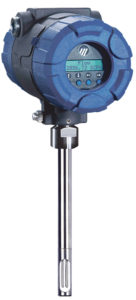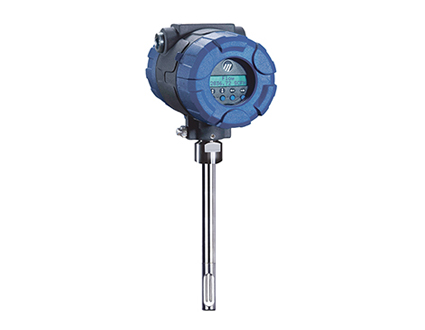The First choice for Energy Management Flow Applications
The ability to better monitor combustion air, fuel gas flow and compressed air can help identify losses that over short periods of time can affect a plant’s profitability. The two key phrases when discussing instrumentation for the aforementioned are ‘cost effective’ and ‘return on investment.’ Thermal dispersion uncovers the benefit in the shortest timeframe possible at the most reasonable cost.
 Thermal mass flow meters are primarily used in air and gas flow measurement applications. The meters consist of a transmitter and probe with temperature sensors (RTDs) located in the pins at the bottom of the probe. As the flow rate increases, heat gets taken away from the heated sensor. More power is then applied to the heated sensor to maintain the temperature difference.
Thermal mass flow meters are primarily used in air and gas flow measurement applications. The meters consist of a transmitter and probe with temperature sensors (RTDs) located in the pins at the bottom of the probe. As the flow rate increases, heat gets taken away from the heated sensor. More power is then applied to the heated sensor to maintain the temperature difference.
Combustion air flow measurement to a boiler maintains the stoichiometric ratio by the amount of fuel being supplied. Too little air flow can result in incomplete combustion along with additional carbon monoxide or pollutants. Alternatively, too much air flow can cool the furnace and waste heat via the stack. The repeatability of the air measurement obtains the most efficient air-fuel ratio (AFR).
Measuring fuel gas flow (natural gas or propane) usage to individual combustion sources compared to the output (steam/hot water) can help optimise boiler efficiency and better manage energy consumption. Knowing individual boiler performance and lowering fuel consumption is one of the easiest methods to reduce cost and improve profits.
T +44 (0)118 9311188
info@able.co.uk
https://www.able.co.uk

